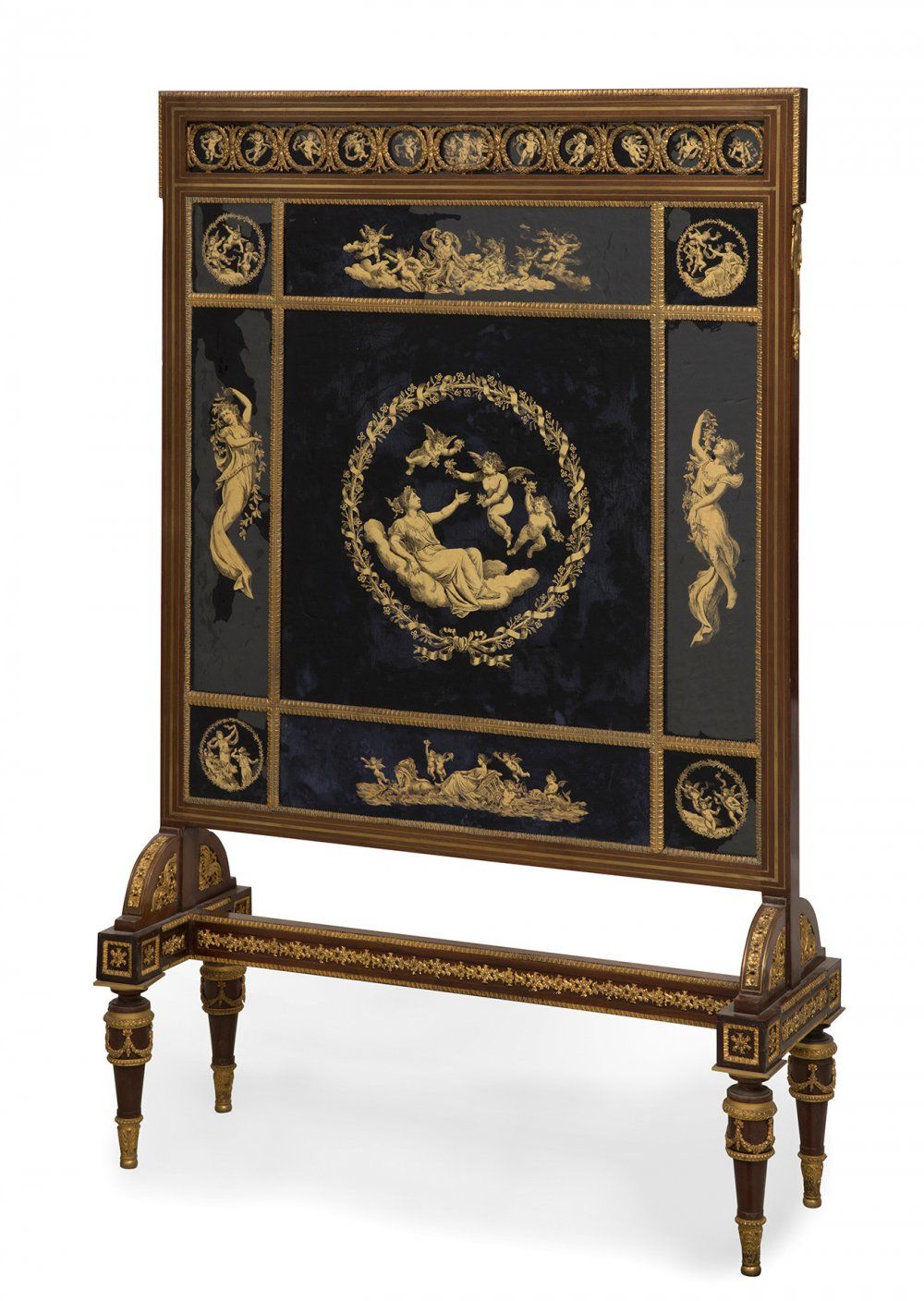Description
Louis XVI style paravent, France or Spain, circa 1800. Walnut, brass marquetry, gilt bronze sconces and verre englomise plaques. Mirror of later period. Provenance; Former Royal Collection. Measurements: 111 x 72,5 x 25,5 cm. Paravent or single-leaf screen made of carved and gilded wood, with a glass finish in the centre. The piece is supported by two legs located on each side, supporting the whole structure of the piece. This is defined by a perimeter of straight forms, ornamented with carved decoration featuring classicist motifs. The central leaf is also decorated with motifs inspired by classical antiquity, featuring ladies dressed in the ancient manner. The technique used for the ornamentation of the glass is known as Verre églomisé, a French term that refers to the process of applying a design and gilding to the back of the glass to produce a mirror finish. The name derives from the 18th century French decorator and art dealer Jean-Baptiste Glomy, who was responsible for its revival. Glomy's technique was relatively simple and consisted of applying decorative designs in a combination of plain and gold colours, usually on glass picture frames. However, over time it has come to be used to describe almost any process involving painted glass and gilding, however elaborate.
4
Louis XVI style paravent, France or Spain, circa 1800. Walnut, brass marquetry, gilt bronze sconces and verre englomise plaques. Mirror of later period. Provenance; Former Royal Collection. Measurements: 111 x 72,5 x 25,5 cm. Paravent or single-leaf screen made of carved and gilded wood, with a glass finish in the centre. The piece is supported by two legs located on each side, supporting the whole structure of the piece. This is defined by a perimeter of straight forms, ornamented with carved decoration featuring classicist motifs. The central leaf is also decorated with motifs inspired by classical antiquity, featuring ladies dressed in the ancient manner. The technique used for the ornamentation of the glass is known as Verre églomisé, a French term that refers to the process of applying a design and gilding to the back of the glass to produce a mirror finish. The name derives from the 18th century French decorator and art dealer Jean-Baptiste Glomy, who was responsible for its revival. Glomy's technique was relatively simple and consisted of applying decorative designs in a combination of plain and gold colours, usually on glass picture frames. However, over time it has come to be used to describe almost any process involving painted glass and gilding, however elaborate.
